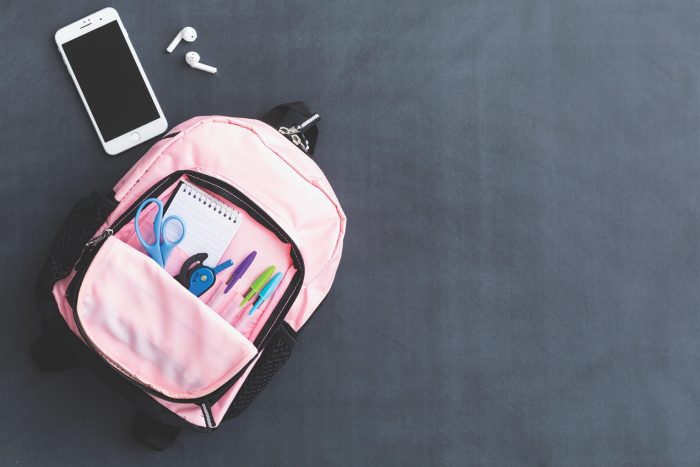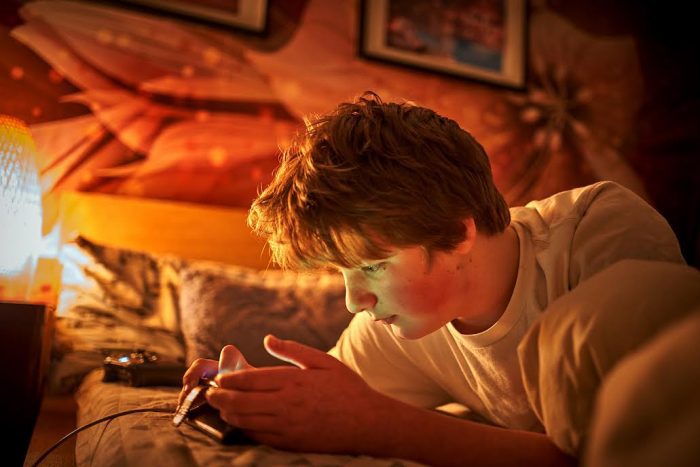By Daniel Dunaief
Smartphones are an attractive nuisance not just during family time, when parents might otherwise struggle to see anything other than the top of the heads of their children, but also during school.

In a recent research letter published in JAMA Pediatrics, scientists led by Lauren Hale, Professor in the Department of Family, Population and Preventive Medicine at Stony Brook University, found in a study of 117 students from the ages of 13 to 18 that smartphone use during school hours typically consumed an average of about 1.5 hours. That’s about 23 percent of a typical school day.
“School time should be a time for being present,” said Hale. It should involve interacting with peers and learning from teachers. “When a quarter of your day is spent with your finger on the phone” students are missing opportunities for academic and social growth.
The study, which was funded by the Della Pietra Family Foundation, comes as Governor Kathy Hochul (D) has unveiled a plan to restrict cell phone use during the day for students from kindergarten through 12th grade.
The governor’s plan allocates $13.5 million for pouches, cubbies and other storage devices and comes as other states and countries seek to limit the kinds of distractions that diminish learning and that prevent face-to-face social interactions.
The JAMA study “really does underscore the need to help children reduce their screen time, both at school and at home,” said Kris Perry, Executive Director of Children and Screens: Institute of Digital Media and Child Development.
At this moment, “we are seeing a crisis in childhood that is highly correlated with the introduction of the smartphone and social media platforms,” Perry added.
In the JAMA Pediatrics study, the researchers found that a quarter of the participants spent more than two hours on their phone during school.
The top five most used apps or categories, other than internet browsing, were messaging, Instagram, video streaming, audio and email.
The study may underestimate the amount of time typical students spend on their phones, in part because the participants in the research knew that their phone use was being tracked.
Study design
The students in the study, who were divided almost equally between boys and girls and who came from a representative sampling of different backgrounds, completed a 15-minute smartphone-based survey and installed RealityMeter to measure their smartphone use.
The researchers examined data from these students, whose phones sent signals throughout the day about the time they are using the phone.
The average number of hours these students were on their phones during the day was 5.59, which excludes other electronic devices such as video games, desktop computers or laptops.
To be sure, the survey didn’t analyze the times during the day that these students were on their phones. Some of these participants, for example, could have used their smartphones during their lunch or free periods rather than during calculus classes or lectures about American History, French or any other subject.
“We didn’t have the granularity of each student’s schedule to know” when the phone usage was the highest, Hale said.
Still, using the phone instead of interacting directly with students in the room, at a lunch table, or in a hallway is a “missed opportunity for eye-to-eye contact in real life,” said Hale.
In the study, about 22 percent of the participants indicated that their parents restricted their phone use when they are at home.
The data for this group during school tracks, however, closely with the students who said they didn’t have any such similar phone restrictions at home. The study also compared phone usage for students whose parents attended college with those who didn’t attend or finish college.
The children of college graduates used the phone about 30 minutes less per school day.
Combination of factors
Several factors may have contributed to any potential increase in the use of smartphones in school.
During the Covid-19 pandemic, the lockdown and remote learning, students relied on technology to log in to their classrooms. Adolescents who couldn’t interact with each other in person also spent considerable time texting and interacting with each other on social media.
Additionally, various apps have enhanced their platforms to encourage users to stay on them for longer periods of time.
“The algorithms know that I like Shih Tzus, so I keep getting reels for tiny white dogs doing tricks,” said Hale. “If they put up cats, I wouldn’t watch.”
The same is true for adolescents, who see sports clips or other content regularly that compels them to stay online and that may interfere with their ability to learn in class or to socialize with people around them.
These apps and the devices adolescents use could provide information about usage patterns.
“I would love to see social media platforms share more information,” said Hale.
Perry added that parents act as important role models for their children when it comes to screen time. “What you’re modeling is going to be replicated,” she said. “Things that adults do without thinking, their children are copying.”
Next steps
Hale indicated that the research team has just finished collecting a second wave of data on the same participants. The scientists will be following up to see screen use patterns as well as any observed changes in mental health and physical well being.
The recent work published in JAMA Pediatrics is a “descriptive baseline” of smartphone usage in school, said Hale. She suggested that researchers need to conduct further research to understand the impact of phone usage patterns on education. “We need replication in science” to uncover more details over a larger population for smartphone use.
Like Gov. Hochul and others who have focused on this issue, Hale believes these personal electronics may hinder the learning process.
“I’m concerned about kids losing precious school hours to distracting devices,” Hale said. When students go to school, they should “be ready for learning and social time. That’s what’s going to make a difference in their education.”






